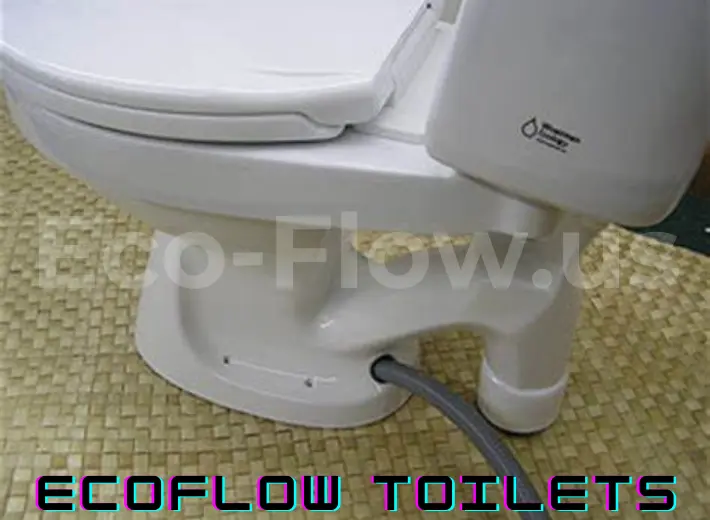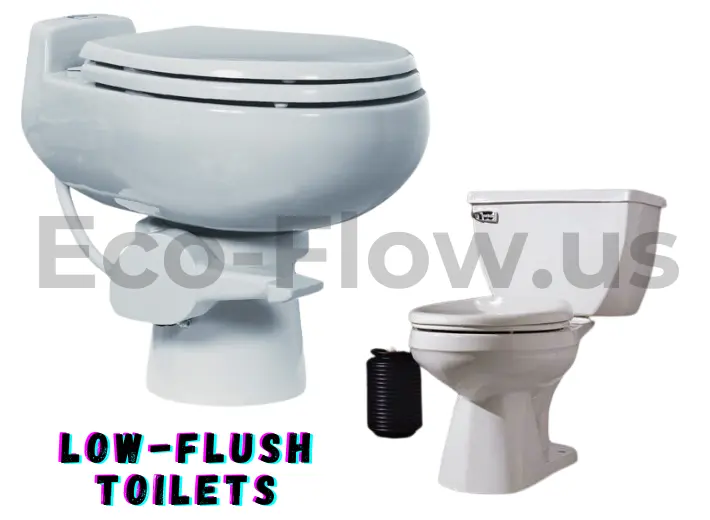As environmental awareness grows, many homeowners are seeking ways to reduce their carbon footprint and conserve resources. One effective approach is upgrading to eco-flow toilets, which offer significant benefits in water conservation and efficiency. This article provides an in-depth look at EcoFlow Toilets, including their advantages, types, installation, and maintenance.
What Are EcoFlow Toilets?
Definition and Purpose
Eco-flow toilets are designed to reduce water usage while maintaining optimal performance. They achieve this by using advanced flushing mechanisms and water-efficient technologies.

The primary purpose is to minimize water waste and reduce utility bills, contributing to a more sustainable home.
Benefits of EcoFlow Toilets
- Water Conservation: EcoFlow Toilets use less water per flush compared to traditional models, leading to significant savings on water bills and a reduction in environmental impact.
- Cost Savings: Lower water usage translates to reduced utility costs, making eco-flow toilets a cost-effective choice in the long run.
- Environmental Impact: By conserving water, these toilets help protect natural resources and reduce the strain on local water supplies.
Types of EcoFlow Toilets
Low-Flush Toilets
Low-flush toilets use less water per flush than conventional toilets. They typically consume between 1.28 and 1.6 gallons per flush (GPF), compared to older models that use 3.5 to 5 gallons.

This type is ideal for households aiming to minimize water usage without compromising performance.
Pros and Cons
- Pros: Significant water savings, reduced utility bills, and compliance with modern building codes.
- Cons: May require multiple flushes for larger waste, which can somewhat diminish water savings.
Dual-Flush Toilets
Dual-flush toilets offer two flushing options: a partial flush for liquid waste and a full flush for solid waste. This feature allows users to choose the appropriate amount of water needed for each type of waste, further enhancing water efficiency.

Pros and Cons
- Pros: Customizable water usage, greater control over water consumption, and increased overall efficiency.
- Cons: Potentially higher upfront cost and more complex installation compared to single-flush models.
Composting Toilets
Composting toilets use little to no water and turn human waste into compost. These toilets are especially useful in off-grid locations or where water conservation is a top priority. They rely on natural processes to break down waste, reducing the need for traditional sewage systems.
Pros and Cons
- Pros: No water usage, environmentally friendly, and reduces the need for sewer infrastructure.
- Cons: Higher initial cost, regular maintenance required, and may not be suitable for all households.
Installation of EcoFlow Toilets
Preparing for Installation
Before installing an eco-flow toilet, it’s essential to measure the existing toilet space and ensure compatibility with the new unit. Check local plumbing codes and regulations to ensure compliance. You may also need to remove the old toilet and make any necessary plumbing adjustments.
Installation Steps
- Remove the Old Toilet: Turn off the water supply, disconnect the old toilet, and remove it from the flange.
- Prepare the Flange: Clean the flange and check for any damage. Replace it if necessary.
- Install the New Toilet: Position the eco-flow toilet over the flange, secure it with bolts, and connect the water supply.
- Test the Flush: Check for leaks and ensure the toilet operates correctly. Make any necessary adjustments.
Professional vs. DIY Installation
While installing EcoFlow Toilets yourself can save money, hiring a professional plumber ensures a proper and efficient installation. Professionals can address any potential issues and ensure that the installation meets local codes and standards.
Maintenance Tips for EcoFlow Toilets
Regular Cleaning
Keep your eco-flow toilet clean to maintain its efficiency and appearance. Use non-abrasive cleaners and avoid harsh chemicals that can damage the toilet’s finish. Regular cleaning helps prevent buildup and ensures smooth operation.
Inspecting for Leaks
Periodically check for leaks around the base of the toilet and the water supply connections. Leaks can indicate issues with the installation or wear and tear on the components. Address any leaks promptly to avoid water waste and potential damage.
Upgrading Components
As eco-flow toilets age, certain components such as flappers and seals may need replacement. Upgrading these parts can improve performance and maintain water efficiency.
Troubleshooting Common Issues
If your EcoFlow Toilets isn’t performing as expected, check for common issues such as clogs or low water pressure. Simple fixes, like adjusting the flush handle or clearing blockages, can often resolve performance problems.
Conclusion
EcoFlow Toilets are an excellent choice for homeowners looking to conserve water, reduce utility bills, and minimize their environmental impact. By understanding the types of eco-flow toilets, their benefits, and proper maintenance practices, you can make an informed decision that supports both your budget and the environment.
Frequently Asked Questions (FAQs) about EcoFlow Toilets
1. What are the benefits of using EcoFlow Toilets?
Eco-flow toilets offer several advantages, including significant water conservation, reduced utility bills, and a positive environmental impact. By using less water per flush, they help protect natural resources and lower the cost of water for your home.
2. What types of eco-flow toilets are available?
The main types of eco-flow toilets include low-flush toilets, dual-flush toilets, and composting toilets. Low-flush toilets use less water per flush, dual-flush toilets offer two flushing options for better water management, and composting toilets turn waste into compost without using water.
3. How do I install an EcoFlow Toilets?
To install an EcoFlow Toilet, first remove the old toilet and prepare the flange. Place the new toilet over the flange, secure it with bolts, and connect the water supply. It’s important to test the flush and check for leaks. While DIY installation is possible, hiring a professional ensures proper installation and compliance with local codes.
4. How do I maintain my EcoFlow Toilets?
Regular maintenance for eco-flow toilets includes cleaning with non-abrasive cleaners, inspecting for leaks, and upgrading components such as flappers and seals as needed. Regular checks help ensure the toilet operates efficiently and lasts longer.
5. Can I install an EcoFlow Toilet myself, or should I hire a professional?
While installing an eco-flow toilet can save money, hiring a professional plumber is often recommended to ensure proper installation. Professionals can handle any issues and ensure the installation meets all local codes and standards.
Discover the cutting-edge technology behind EcoFlow’s power solutions with their detailed guide! The “Guide to EcoFlow Technology” provides an in-depth look at the innovative features that set EcoFlow apart in the world of portable energy.
From rapid charging capabilities and high-capacity power stations to advanced solar panel integration, this guide explains how EcoFlow’s technology works to deliver reliable and efficient power solutions. Learn about the smart battery management systems, energy-saving designs, and user-friendly interfaces that make EcoFlow products both powerful and easy to use.
Whether you’re interested in maximizing your outdoor adventures or preparing for emergencies, understanding EcoFlow’s technology will help you choose the right product for your needs. Stay informed and make the most of your energy solutions with this essential guide.
For a closer look at the technology behind EcoFlow,
visit the Guide to EcoFlow Technology.
